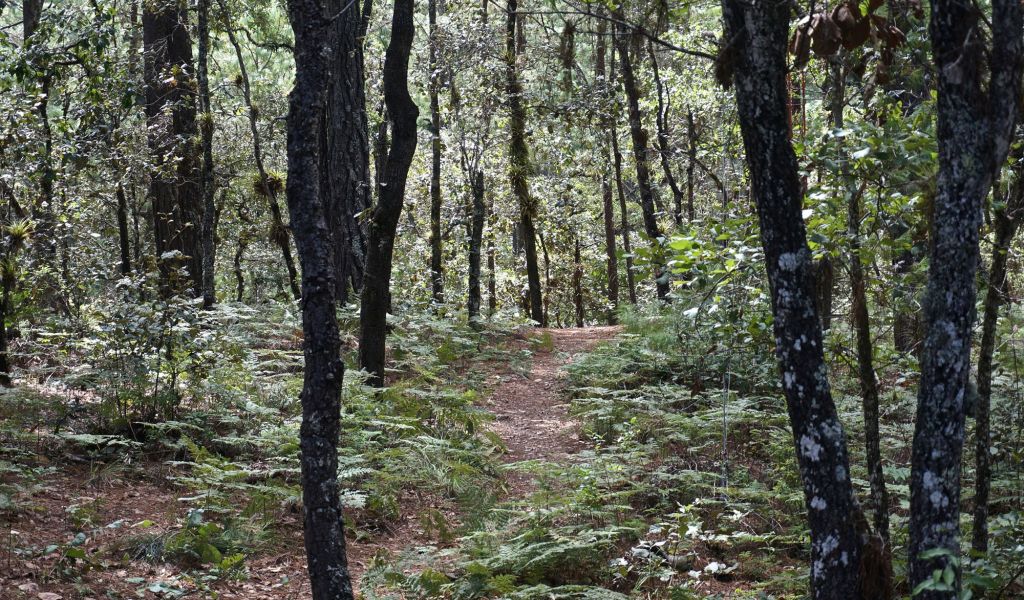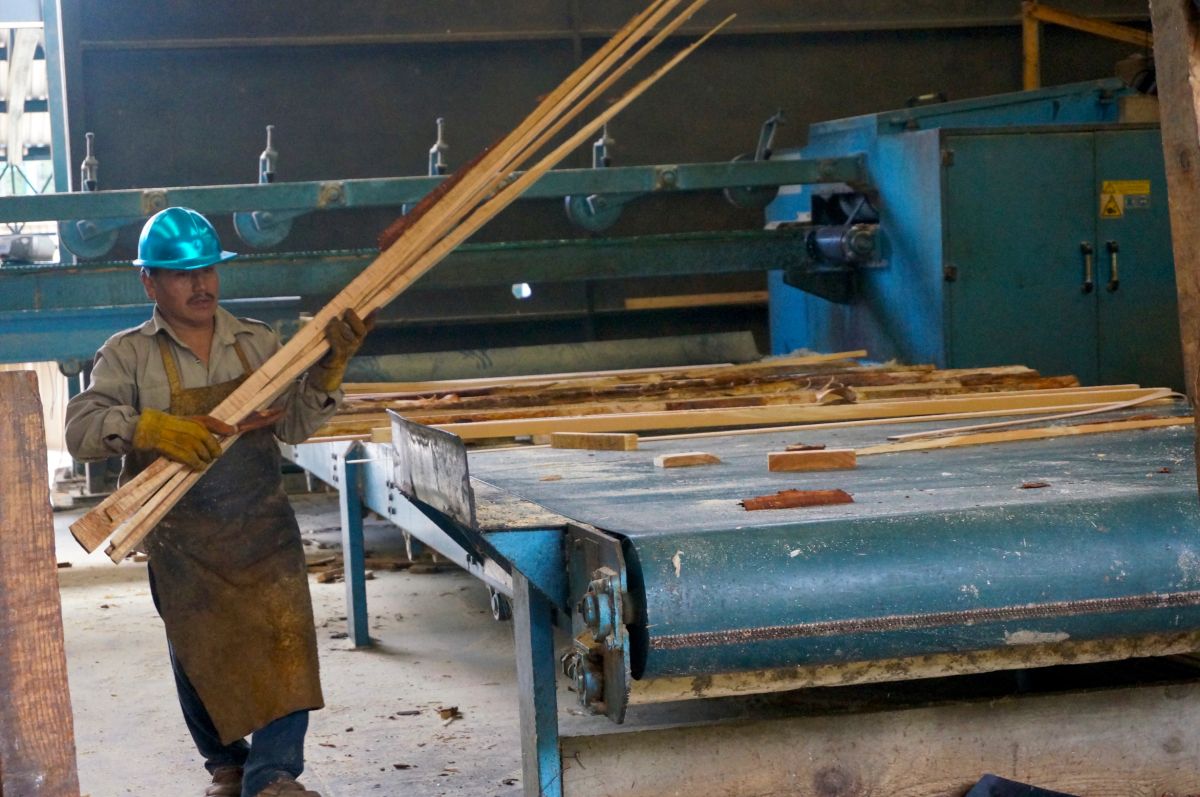Embracing community forestry and community-based fire management: Lessons from Mexico and Nepal

An article published in The Guardian in May 2024 highlights two significant successes in the forestry sector of Oaxaca, Mexico – a decline in wildfires and an increase in biodiversity. It draws a causal link between these successes and the involvement of Indigenous Peoples and local communities in forest management.
Over half of Mexico’s forests are managed by local and Indigenous communities. This is largely achieved through ‘ejido’, a social property model that involves communal ownership of public lands. Ejido presents a success story in sustainable forest management and is tied to the progressive devolution of forest management rights in Mexico. The model, which came into effect as early as 1917, gained substantial traction and recognition in the 1990s.
On the other side of the world in Nepal, community forestry started in the 1970s. Nepal has the oldest operational community forest model among RECOFTC’s seven focal countries. RECOFTC countries such as Thailand and Indonesia have community forestry and social forestry models that are much younger but have ambitious targets for handover to local communities. RECOFTC is supporting them in these commitments through innovative tools.
We have been working in Nepal for the past 30 years, cultivating partnerships in community forestry and decentralized forest management. The Nepal government formally recognized community forest user groups as managers of their forests with the promulgation of its Forest Act in 1993. RECOFTC and our local partners were instrumental in fostering the enabling conditions that led to this recognition and subsequent policies and implementation.
The Oaxaca model
I had the privilege of visiting Oaxaca, a state in southern Mexico, in 1996 as part of a graduate research team from the Yale School of Forestry and Environmental Studies. My second visit, in 2018, was part of a collaborative effort by the International Institute for Environment and Development (IIED), Rainforest Alliance and InterLaken Group looking into community-based enterprises and the importance of land tenure. I was fortunate to interact closely with community leaders and stakeholders during both trips. These interactions gave me insights into how deeply this community forestry model – and the entrepreneurship it fosters – has benefited communities and the health of their forests.
I published my findings in 2002 and have tracked the documentation by IIED and the Rights and Resources Initiative (RRI) on how the communities have thrived. While I hope to co-author a reflection on these findings in the near future, I’d like to share insights that might be relevant to other countries here.
Oaxaca’s model exhibits strong community engagement, which translates to better forest health and integrated fire management. The Guardian article links Oaxaca’s positive biodiversity outcomes to fewer undesired wildfires. IIED has also documented the important linkage between community forest enterprises and the UN Global Goals. RECOFTC has endeavored to work more on integrated fire management and community-based fire management (CBFiM), namely because of the kinds of co-benefits we are seeing in places like Oaxaca.

Can Nepal learn from Oaxaca?
By engaging local communities and utilizing their Indigenous knowledge and investment in the land, Mexico ensured a land tenure transition that has created a sustainable model that not only protects forest health, but also enhances it. The trajectory of community forestry in Nepal has been different.
With the adoption of community forests and secure land tenure, Nepal witnessed widespread growth in forest coverage. Currently, forests cover roughly 42 percent of the total land area in Nepal. However, the increase in forest coverage, often measured in tree canopy cover, tells only half the story. Even though forest areas have increased, forested landscapes have observed an outmigration of people to urban centers, and often to other countries, in search of better economic prospects. This trend has reduced reliance on forests for primary sustenance, leaving these landscapes unmanaged and neglected. This has also meant that people have been deprived of a chance to potentially engage in and benefit from a bioeconomy or green economy.

Lately, the sweltering heat in April and May, exacerbated by climate change, has ushered in uncontrollable forest fires. These fires are responsible for the smog and haze that engulfs Nepal’s capital city, Kathmandu, and drives tourism away from Nepal. CBFiM opportunities exist, but fire management remains very centralized, leaving the government ill-equipped to handle the scale of the problem.
There are also governance issues that make it difficult for community forestry to benefit from forests, especially taxation on forest products. A lack of clarity on the country’s three levels of government and overall forest governance may be preventing the private sector from investing in roads and necessary infrastructure for the forest sector to make the best use of its natural capital. Instead of making use of its forests, the country continues to rely on imports.
Nepal also does not have infrastructure for processing and marketing timber, reinforcing its reliance on imports. The bureaucratic hurdles and multiple levels of taxation at state, province and local levels discourage community engagement in forestry, leaving these local initiatives without critical incentives to help rural economies work on sustainable forest management.
Lessons and implications from sustainable forestry in Oaxaca and Nepal
Oaxaca’s success demonstrates how empowering Indigenous People and local communities and integrating traditional knowledge into forest management can lead to ecological and economic resilience. The experience in Nepal underscores the need for creating sustainable economic opportunities to prevent outmigration and ensure active community ownership and management of forest resources.
With the necessary handholding and support from organizations, Mexico's model is feasible for the Asia-Pacific region. For Nepal, we are performing a governance study to see which bottlenecks can be addressed by federalism in ways that both support decentralized decision making and cultivate the original spirit of the 1993 Forest Act.
By embracing people-centered forest management, RECOFTC focal countries can learn from these models to achieve sustainable forest management and bolster local economies. A truly community-centered approach can enhance forest cover, strengthen biodiversity conservation and build greater resiliency to wildfires.
###
David Ganz is executive director at RECOFTC.
The Community-based Fire Management (CBFiM) in Asia project is made possible through a five-year cooperative agreement between the USDA Forest Service International Programs and RECOFTC. The project receives financial support from the United States Indo-Pacific Command (USINDOPACOM) of the Department of Defense, along with funding from USAID and the USDA Forest Service International Programs.
RECOFTC’s work is made possible with the support of the Swiss Agency for Development and Cooperation and the Government of Sweden.

